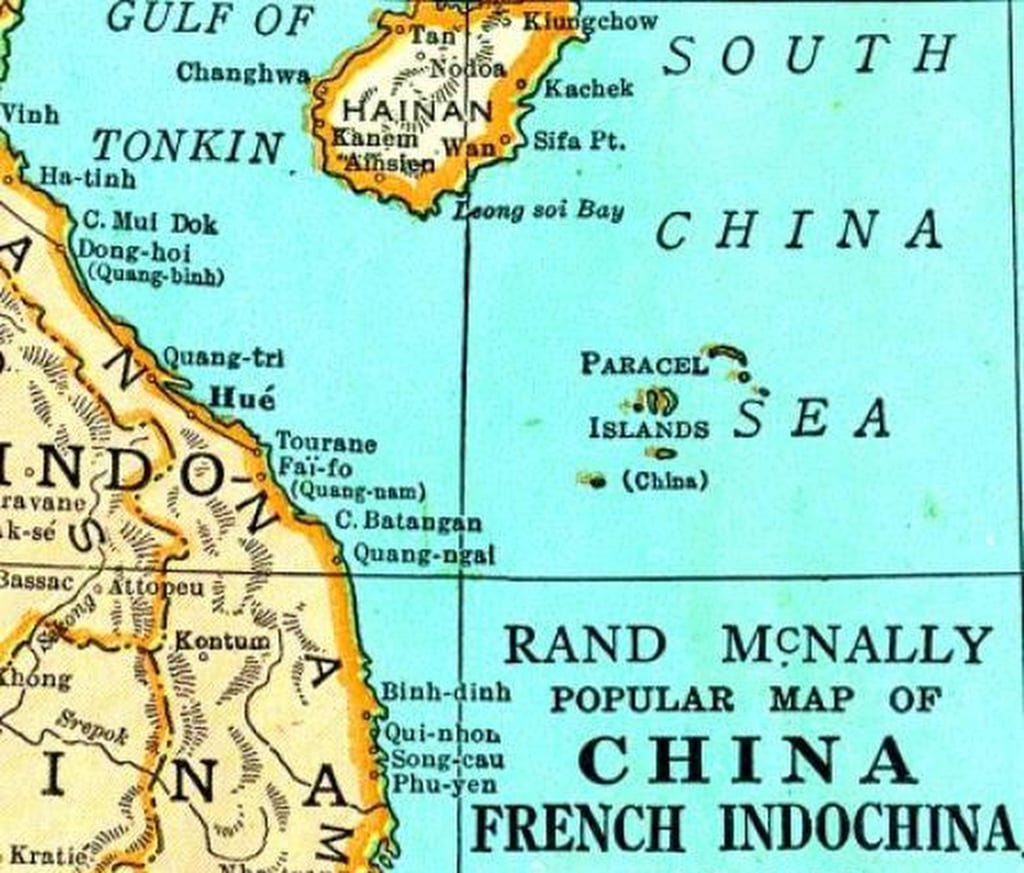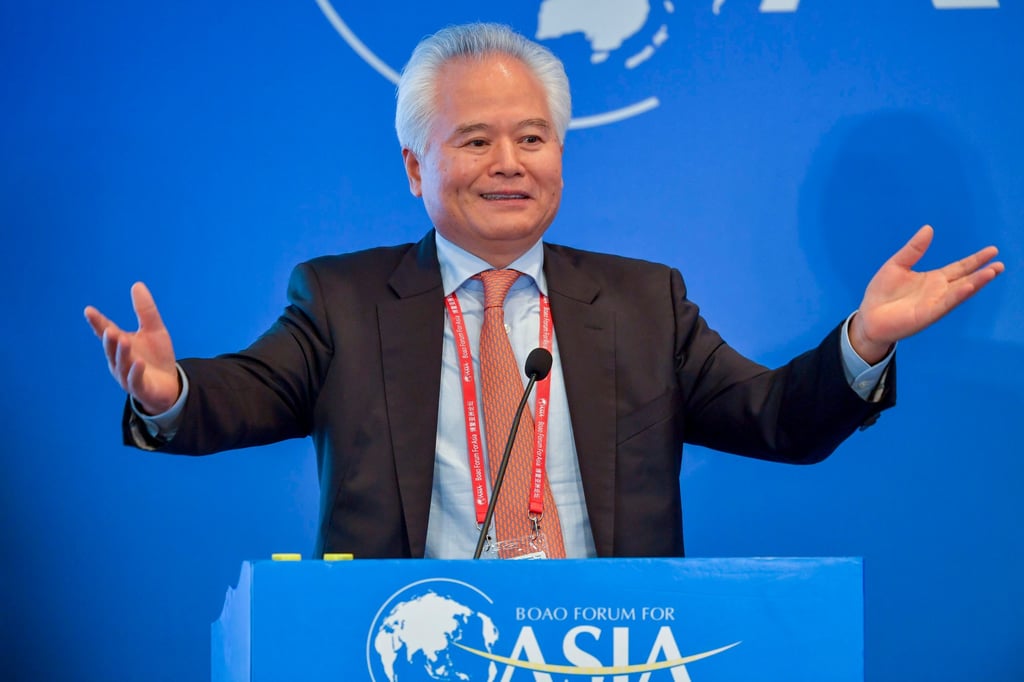Secondly, rival claimants have ramped up their unilateral behaviour in the disputed waters. Namely, the Philippines, Vietnam and Malaysia who are all eager to reinforce their presence in contested waters after the US abandoned neutrality in the South China Sea dispute and as the window narrows for negotiations on a code of conduct.
The foreign ministers of China and the Asean member states agreed to accelerate talks on the code of conduct for the South China Sea in July last year, and they announced a three-year deadline to complete the talks. But the negotiations have not gone smoothly.
When the talks started in 2013, it was believed the rival claimants were looking for a set of rules as a way to regulate China’s land reclamation activities and restrain its expanding maritime powers and law enforcement. But now – with China having completed its island-building – rival claimants are thinking of building their own islands or trying to cement control over disputed waters. That means countries are now less motivated about the code of conduct talks.
So while negotiations are still going on at the working group level or at the level of senior officials, progress is very slow – or there is no progress at all.
The code covers a wide range of contentious issues and it needs the nod from China and the 10 Asean member states before it can go ahead.
There is no agreement on whether it will be legally binding. Its geographical scope is also contentious: Vietnam wants to include the Xisha [Paracel] Islands; China believes it should only cover the Nansha [Spratly] Islands; the Philippines wants it to cover not just the Nansha Islands but also Huangyan Island [Scarborough Shoal].
There is the issue of third parties. For example, whether the US should be allowed to conduct military exercises in the South China Sea. Or whether companies from countries outside the region should be allowed to carry out oil and gas exploration in these waters.
Another issue is whether the final code of conduct will have to be passed by the parliaments of each signatory. Also, China sees it as a mechanism for crisis management, while rival claimants such as Vietnam and the Philippines see it as a dispute settlement mechanism.
China has territorial disputes with a number of Southeast Asian countries, but why do you think disputes with the Philippines stand out?
Let’s review the history. The Philippines was the first country to violate China’s rights in the South China Sea in the 1970s, when China was in the grip of the Cultural Revolution. Then-president Ferdinand Marcos Snr sent the military to take over a number of islands, including Feixin [Flat] Island and Zhongye [Thitu] Island.
Beijing and Taipei didn’t respond militarily and Manila in 1971 gained control of more islands and reefs. The Philippines carried out five military operations and illegally took over eight Chinese islands and reefs – not including Renai Jiao [Second Thomas Shoal].
It was also the Philippines that used a third-party mechanism for arbitration [an international tribunal in The Hague which in 2016 backed Manila and rejected Beijing’s claims to the South China Sea]. That move went against the consensus of trying to resolve the dispute through dialogue.
The Philippines is the only US treaty ally in the South China Sea, and what Manila is doing in these waters echoes Washington’s strategic realignment that seeks to contain China’s rise.
China stuck to its “four noes” policy in that 2016 case – no acceptance, no participation, no recognition and no implementation. Do you think that was wise? What lessons can China learn from that ruling?
I see no problem with the “four noes” policy. China regards the South China Sea dispute as a very complex issue – unparalleled in the global context – that involves many countries with overlapping claims, and one that can only be resolved through bilateral negotiation.
If China had taken part in the arbitration it would have been inconsistent with the usual practice of resolving maritime disputes through diplomatic negotiation and consultation.
But there are things that China can reflect on, such as whether it should have taken stronger countermeasures against the Philippines. Could Huangyan Island have been reclaimed? I think it was possible. Could China have removed the Philippine warship from Renai Jiao? I think it could have.
Instead, China issued a rebuke but stopped short of taking countermeasures after the Rodrigo Duterte administration said it wanted to improve relations.
It is unlikely that the arbitration ruling would have had such a negative impact if there were strong countermeasures in place. Manila would also have been less likely to launch a second arbitration case.
Do you think China’s response should be the same if the Philippines initiates a second case, or if rival claimants like Vietnam or Malaysia file their own cases?
The Philippines has signalled that it will seek a second arbitration and the possibility is very high. In doing so, Manila would be trying to consolidate its control over disputed reefs – including Houteng Jiao [Iroquois Reef] and Renai Jiao – that it claims as part of its exclusive economic zone.
The Philippines is also trying to win the sympathy from the international community so that it can continue to control Renai Jiao and perhaps try to return to Huangyan Island. A Philippine [coastguard] ship is currently refusing to leave Xianbin Jiao [Sabina Shoal], and the Philippines has grounded ships several times at Sandy Cay [Tiexian Jiao] that were then removed by China.
I don’t know how China will react if the Philippines files a second arbitration case, but I believe it won’t be the same as eight years ago – it won’t be that simple.
After a confrontation at sea, China often says it acted “professionally” or with “restraint” – but other countries see its actions as provocative. How do you explain this?
There’s no standards for right and wrong when it comes to the South China Sea any more. Now, whatever China does is wrong. And whatever violates China’s rights and interests is right. The “discourse power” is not on China’s side.
If you look at maps from the Ming dynasty (1368-1644) – from the government of the Republic of China and even from the US – you can see “China” written in pinyin in parentheses behind the Xisha Islands.
In 1931, after Imperial Japan seized northeast China, France – which had colonised Indochina – was deeply worried about the threat to its geopolitical interests in the region if Japan moved south. So France took control of nine islands and reefs [including Zhongye Island] in the South China Sea.
But those islands and reefs were originally China’s. Beijing has never said that the whole of the South China Sea belongs to China, but that these islands and reefs should be returned to the Chinese people.

China has been criticised for recent incidents when its coastguard fired water cannons at Philippine vessels near Renai Jiao. To me, this showed restraint and they could have been a lot tougher. But the narrative is now upside down – China is the victim, but in the current narrative China has become the invader.
What is the effect of the great power rivalry between China and the US on the South China Sea disputes?
The South China Sea has become an important factor for the US to sustain its hegemony in the western Pacific and maintain its maritime primacy. As China expands its maritime power, the US tends to believe that China wants to drive it out of the South China Sea. But China doesn’t want to do that.
The significance of the South China Sea for China is more than the islands and reefs that are illegally occupied by neighbouring countries. It is a crucial sea lane for China and provides important access to the western Pacific and Indian Ocean.
Also, if China suffers a nuclear strike it will launch a retaliatory strike from the South China Sea.
I think the US has seen this, and that’s why it started to provoke China in the South China Sea and tried to jeopardise China’s ties with rival claimants. The issue should be viewed against the backdrop of the power rivalry between China and the US. The US has abandoned its neutrality in the South China Sea disputes because it knew it was not in its strategic interest to be neutral. In this context, as long as there is competition between China and the US the South China Sea issues will not be resolved simply through negotiation and consultation.
According to a report by US think tank the Centre for Strategic and International Studies, Vietnam has accelerated its land reclamation in the South China Sea in recent months. What’s your assessment of this?
China should take countermeasures against Vietnam’s illegal behaviour in the South China Sea.
First, it has violated the Declaration on the Conduct of Parties in the South China Sea (DOC) and changed the status quo. After the land reclamation, military deployment can be expected. And if you look at the depth of Vietnam’s security cooperation with the US and Japan, it is possible that the military facilities Vietnam builds in the South China Sea could be offered to Japan and the US. That would significantly compromise China’s defence, deterrence and military projection in the South China Sea.
According to the CSIS report, Vietnam has constructed an outpost in the South China Sea with a base as long as 4km [2.5 miles], which could support a 3km [1.9 miles] runway.
Vietnam’s land reclamation is taking place in some of the best locations in the South China Sea and once finished it could be a game-changer for the geopolitical landscape.
This has also set a bad precedent. Maybe China protested quietly, but without international pressure Vietnam will continue with these activities. We need to keep up international pressure through diplomatic notes or countermeasures and with a certain level of transparency.
Some Americans are confused as to why China has so far taken no action against Vietnam while keeping such a close eye on the grounded Philippine warship [used as a military outpost] at Renai Jiao. The land reclamation has more of a negative impact than the Philippine ship, so is this a double standard? In the past, China has used diplomatic pressure and even maritime operations against Vietnamese island-building and unilateral oil and gas exploration.
Meanwhile, Vietnam has constantly protested against what China has done in the Xisha Islands. Even a hotpot restaurant on Yongxing [Woody] Island drew a protest from Vietnam.
Hanoi said in June that it was ready to hold talks with Manila on their overlapping continental shelf claims. What impact could that have on the maritime dispute between Beijing and Hanoi?
China will not recognise the continental shelf delimitation between Vietnam and the Philippines.
On the surface it is the Philippines taking the lead, but behind this I think it is Vietnam attempting to consolidate its illegal controls in the South China Sea. Vietnam’s strategy is very clear – it is using land reclamation to consolidate its illegal gains and develop military and civil facilities in the South China Sea.
Meanwhile, Vietnam joined Malaysia in 2009 in a joint submission relating to a southern area of the South China Sea. And in December 2022, Vietnam signed an agreement with Indonesia on the demarcation of their exclusive economic zones, part of which fall within China’s dash line. That creates a dilemma for China since it will have to deal with a third country if it rejects Vietnam’s delimitation.
For a long time, Beijing has taken the approach of “setting aside sovereignty disputes and seeking joint development” when it comes to maritime disputes. Do you think this is working?
I don’t think there’s any problem with the general principle, but under the 2016 arbitration ruling, joint development has reached a dead end.
The tribunal ruled that none of the Nansha Islands are legally islands that are entitled to a 12-nautical-mile territorial sea, and it rejected China’s claim to the entirety of Nansha Islands as a single archipelagic feature. So from the perspective of Vietnam and the Philippines, there’s no dispute with China in the Nansha Islands, so there’s no need for joint exploration. The unilateral oil and gas exploration is actually based on the ruling.
The principle is part of China’s goodwill to ensure peace and stability in the South China Sea and it is a temporary arrangement before disputes are resolved. But no countries really believe in China’s initiative now, and that’s the biggest challenge. So the possibility of joint exploration becoming a reality is extremely low.
China and the Philippines did set up the Intergovernmental Joint Steering Committee on Oil and Gas Development in October 2019, when oil firms from the two sides started talks. China also proposed three areas for cooperation on oil and gas, but no progress has been made and a memorandum of understanding was ended before Duterte left office.
An agreement was signed in 2005 on joint marine seismic surveys by China, the Philippines and Vietnam but that expired in 2008.
With so many factors at play, how can countries think of engaging in joint oil and gas exploration? China will continue to push for joint development but it should harbour no illusions.
Do you think China has plans for more artificial island-building?
If China is willing to build new islands, it can do so at any time. But I don’t think it’s necessary at this stage.
Existing islands in Xisha can be developed and civilian facilities expanded – they could be opened to the international community in the future.
In the Nansha Islands, new reclamation works are only necessary if China is provoked. For example, if Vietnam were to reclaim too much land, or if the Philippines were to increase its control over Renai Jiao, China would have to retaliate.
In that case, would it be possible to reclaim Huangyan Island? I don’t think it’s impossible. It’s not necessary at the moment, but if China is forced to take a final step as a countermeasure against the US and the Philippines, I think it would be necessary to take that kind of approach.

What about the possibility of a war breaking out in the South China Sea?
The possibility of war cannot be ruled out 100 per cent. For example, on June 17 when the Chinese coastguard seized firearms from Filipino sailors [at Renai Jiao] during a confrontation, a trigger could have accidentally been pulled – you can’t rule out the possibility of armed conflict.
But it would not be easy for the US to step in, and be willing to have a direct conflict with China for the Philippines.
There are many factors behind the high risk of collision between China and the US. They include the increasing frequency of joint anti-China patrols in the South China Sea, some of which have taken place in disputed waters. Also the multinational Code for Unplanned Encounters at Sea is not binding. China and the US still don’t have an effective mechanism to manage crises at sea. And Chinese maritime militia have a large presence in these waters. A collision could easily happen without a proper crisis management mechanism.
Concerns about this risk could partly explain why the US pushed for military-to-military communication with China to be resumed after the leaders met in November, and why the Americans pressed for calls between senior military officials at the Shangri-La Dialogue in Singapore.
It will not be simple if an armed conflict breaks out – it’s not 2001, when the two fighter jets collided. The consequences will be more serious.
Do you think there’s a way to resolve the territorial disputes in the South China Sea?
A new consensus is needed. For example, can the rival claimants work together to demilitarise the South China Sea? Let’s forget about military deployment on those islands and reefs.
If a code of conduct can’t be agreed, could other agreements be reached to slowly demilitarise the South China Sea? Every claimant could offer an island to develop civilian facilities including scientific stations and environmental research centres to monitor sea levels and restore coral reefs.
China should take the lead by providing an island – like Meiji Jiao [Mischief Reef] – where an oceanic observatory could be built and scientists from the Philippines and Vietnam could be invited to take part in it.
There’s no quick solution for the South China Sea disputes. From China’s perspective, these islands and reefs belong to China. From the point of view of rival claimants, it’s impossible for them to just return the islands and reefs to China. Maintaining the status quo is all we can do, and then we can start to talk about demilitarisation, about environmental protection, about sustainable fishing.
Meanwhile, countries from outside the region should not be allowed to step in. China – as the largest littoral country of the South China Sea – will take more countermeasures if other nations are encouraged by the US to confront it, and it will become an endless loop.

